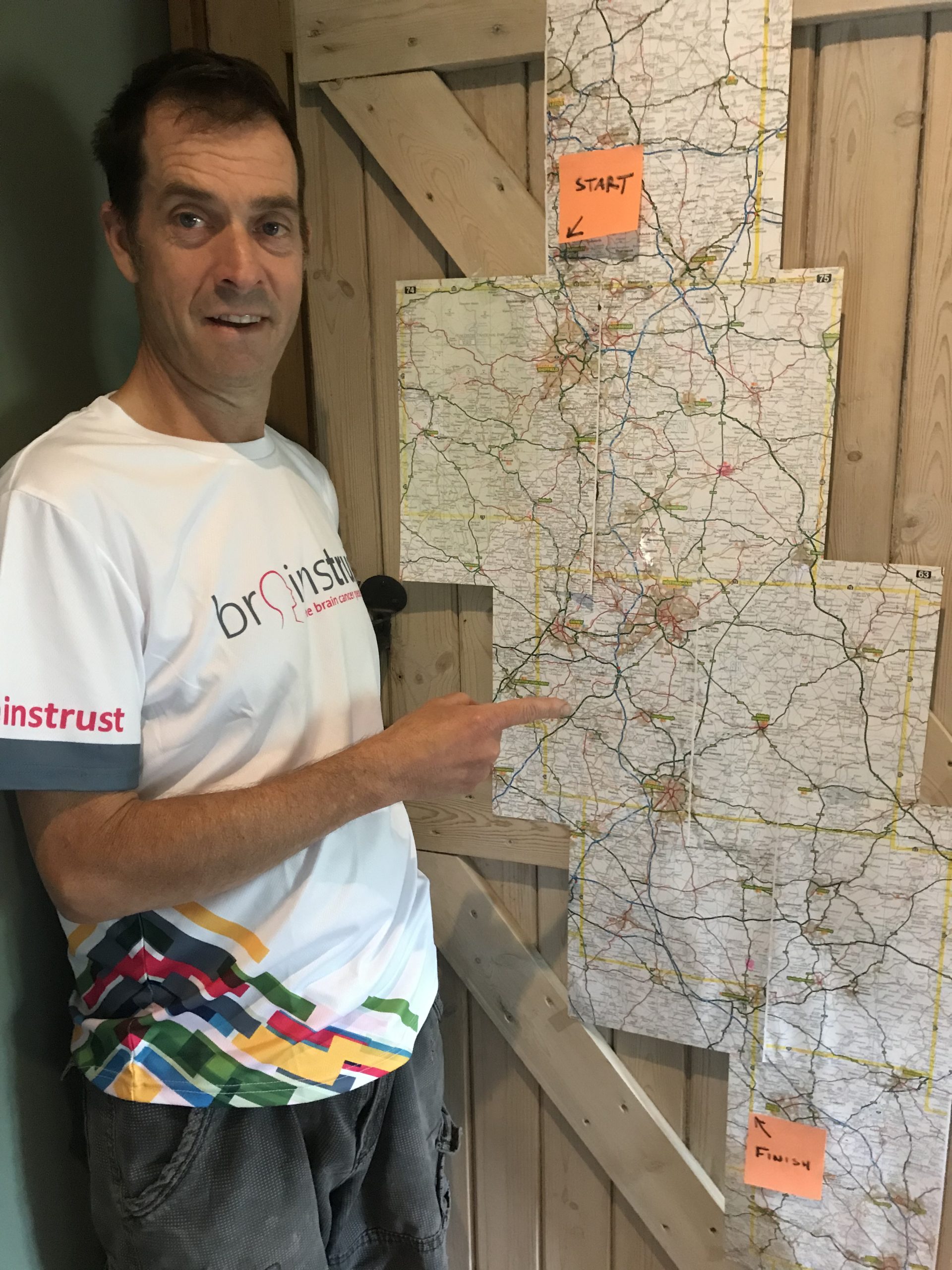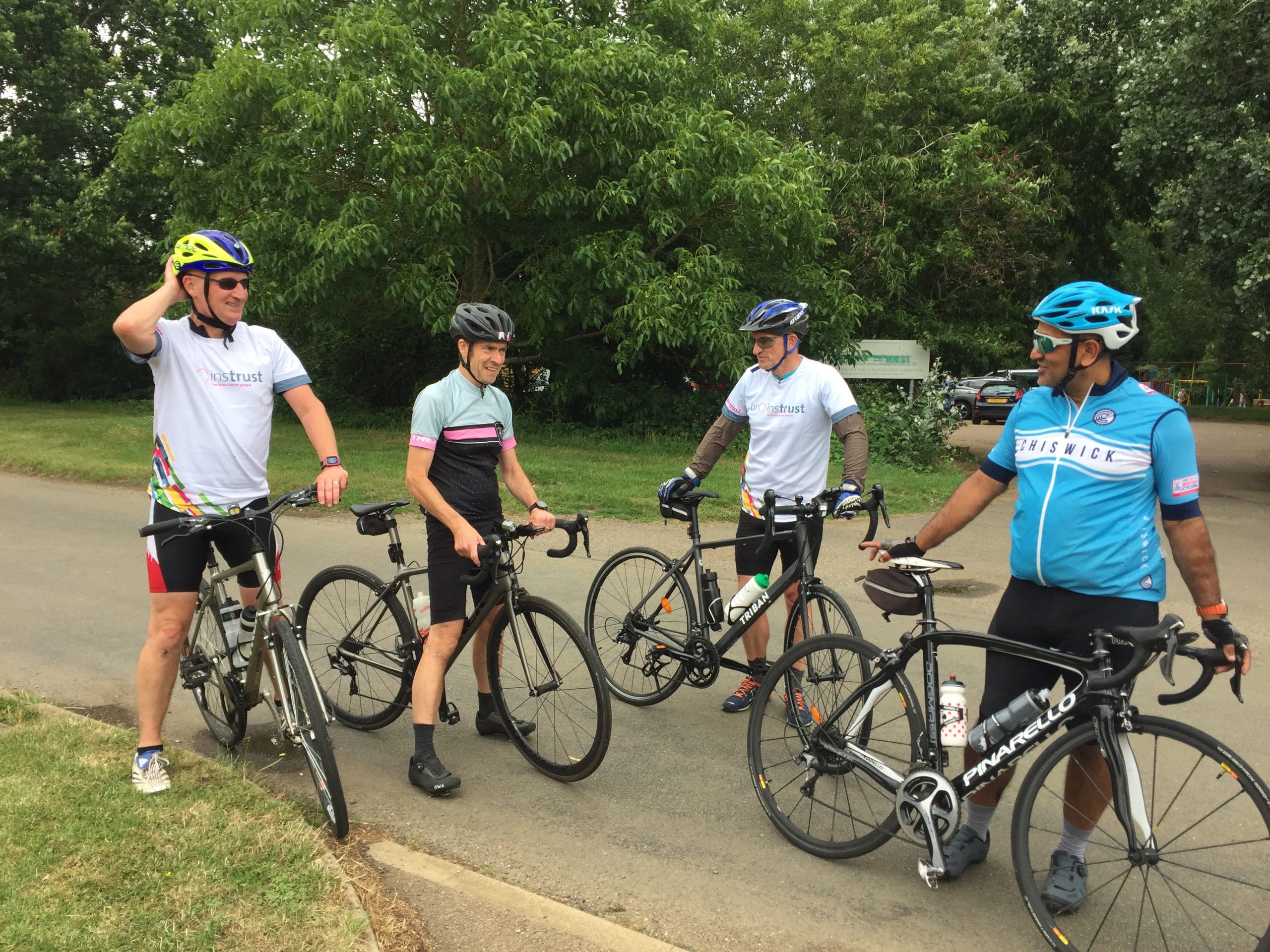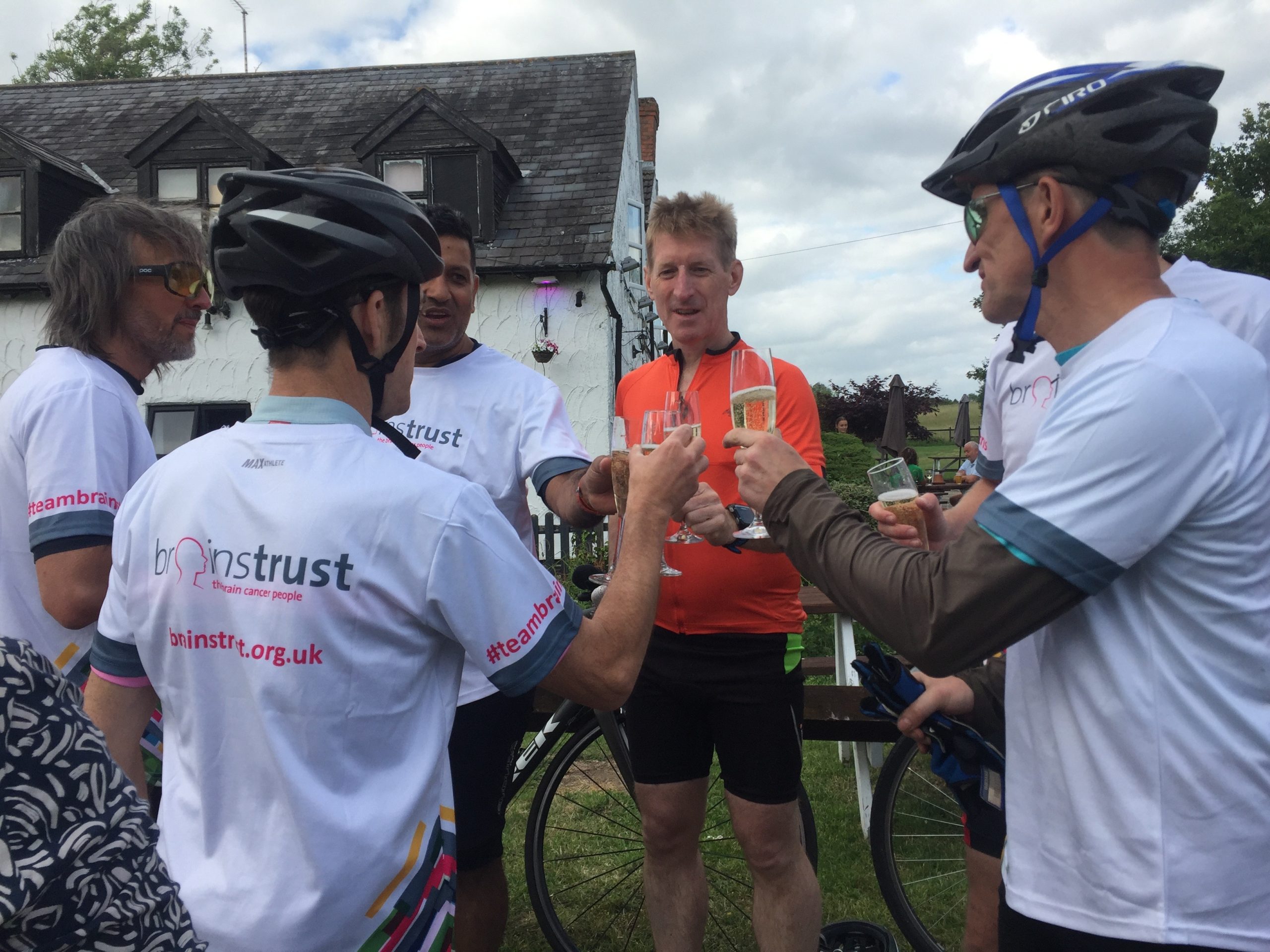In July of this year, Steven and a group of trusty team mates cycled 140 miles in 1 day in their epic ‘Tour de Barnsley à Beachampton’ fundraiser for brainstrust. Steve and his supporters have raised over £2,300 for brainstrust so far – an incredible total that will help fund out vital work supporting people affected by a brain tumour to live their best life possible. In this article, Steve shares more about why he chose to raise money for brainstrust and how the challenge went.
Why I’m fundraising for brainstrust
 14 June 2019 was the day that changed my life. I was a keen runner, cyclist and swimmer and it was during a race that out of the blue I had my first seizure. One minute I was out running, next minute I had a seizure and was rushed to hospital only to be told I had a brain tumour. When you get news like that your world collapses into a blackhole and sucks in everyone around you. Like many people diagnosed with a brain tumour, you think your life will never be “normal” again.
14 June 2019 was the day that changed my life. I was a keen runner, cyclist and swimmer and it was during a race that out of the blue I had my first seizure. One minute I was out running, next minute I had a seizure and was rushed to hospital only to be told I had a brain tumour. When you get news like that your world collapses into a blackhole and sucks in everyone around you. Like many people diagnosed with a brain tumour, you think your life will never be “normal” again.
I had over a year of treatment including surgery, radiotherapy and chemotherapy. I tried to be as active as possible throughout this time and the recovery period that followed, but it was hard.
I know I am one of the lucky ones and not everyone who is diagnosed with a brain tumour has a happy ending, but it was a long time before I knew this to be the case.
During the tough times my wife Annette got in touch with brainstrust and they sent us a brain box and also arranged a meetup with other members of the club that nobody wants to be a member of. It was at this meetup I saw that life could be normal again.
Role on 3 years, I’ve got the all the clear, my seizures are under control, I have been driving for the past 3 month and my fitness has returned.
Tour de Barnsley à Beachampton
I love running and cycling, but without a challenge I get a bit lazy. This is how the “Tour de Barnsley à Beachampton” came about. It took months of planning. I rode bits and pieces of the whole route several time before I was happy with the route. I wanted keep to small roads when possible without going miles out of our way.
the whole route several time before I was happy with the route. I wanted keep to small roads when possible without going miles out of our way.
I wanted to give something back to the charity that made me believe that there’s light at the end of the tunnel. I love a challenge and I wondered if I could bike from Barnsley in south Yorkshire, my wife’s hometown and where her mum still lives, to Beachampton near Milton Keynes where we both live. My theory is the bigger the challenge, and the more friends I could get involved, the more money I could raise. As well as the friends that completed the challenge with me, I trained with other friends that couldn’t make it to main ride and my thanks goes out to them too, they too helped to spread the message.
 We all had setbacks during the training with injuries and catching colds etc – but we made it. The whole them are so happy to complete the challenge, we had such a fun day and to get together with best friends that were always with me during the dark times of my diagnosis was the best thing ever.
We all had setbacks during the training with injuries and catching colds etc – but we made it. The whole them are so happy to complete the challenge, we had such a fun day and to get together with best friends that were always with me during the dark times of my diagnosis was the best thing ever.
I am “normal” again, but with a much better appreciation of life and friends.
We’d like to say a huge thank you to Steven and everyone who trained with him, rode with him and supported him along the way. The money raised will help us ensure the people facing a brain tumour diagnosis and their loved ones are supported to feel connected, in control and able to make the best decisions for them. If you feel inspired by Steven’s story and would like to fundraise for brainstrust there’s plenty of inspiration and support to be found on our ‘do you own thing’ page.





